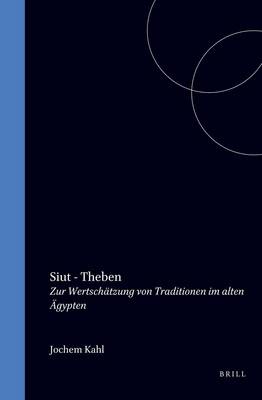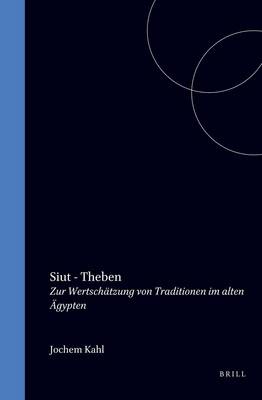
- Afhalen na 1 uur in een winkel met voorraad
- Gratis thuislevering in België vanaf € 30
- Ruim aanbod met 7 miljoen producten
- Afhalen na 1 uur in een winkel met voorraad
- Gratis thuislevering in België vanaf € 30
- Ruim aanbod met 7 miljoen producten
Zoeken
Omschrijving
The Egyptians made use of texts and art forms dating back to sometimes more than 1,000 years. Why did they do this, and how? This book is about the great value of traditions in Ancient Egypt.
A case in point is the Egyptian settlement of Siut, where, during the First Intermediate Period and Middle Kingdom texts were recorded in tombs and on funerary equipment of high officials: mortuary liturgies, biographies, lists of decans, etcetera.
Surprisingly, many hundreds, sometimes even more than a thousand years later these same texts reappear in other regions of Egypt, especially Thebes.
Applying methods of a long tradition of textual criticism, and of the so-called 'Verfahren der Kennwertbestimmung' (a method which makes it possible to capture in numbers the degrees of 'family relationship' between texts), the author solves the questions of (1) the ways and the working of the actual transmission system, and (2) the underlying reasons for copying and the significance of the Siutian tradition for the 'kulturelles Gedächtnis'.
A case in point is the Egyptian settlement of Siut, where, during the First Intermediate Period and Middle Kingdom texts were recorded in tombs and on funerary equipment of high officials: mortuary liturgies, biographies, lists of decans, etcetera.
Surprisingly, many hundreds, sometimes even more than a thousand years later these same texts reappear in other regions of Egypt, especially Thebes.
Applying methods of a long tradition of textual criticism, and of the so-called 'Verfahren der Kennwertbestimmung' (a method which makes it possible to capture in numbers the degrees of 'family relationship' between texts), the author solves the questions of (1) the ways and the working of the actual transmission system, and (2) the underlying reasons for copying and the significance of the Siutian tradition for the 'kulturelles Gedächtnis'.
Specificaties
Betrokkenen
- Auteur(s):
- Uitgeverij:
Inhoud
- Aantal bladzijden:
- 416
- Taal:
- Duits
- Reeks:
- Reeksnummer:
- nr. 13
Eigenschappen
- Productcode (EAN):
- 9789004114418
- Verschijningsdatum:
- 4/08/1999
- Uitvoering:
- Hardcover
- Formaat:
- Genaaid
- Afmetingen:
- 162 mm x 242 mm
- Gewicht:
- 857 g

Alleen bij Standaard Boekhandel
+ 775 punten op je klantenkaart van Standaard Boekhandel
Beoordelingen
We publiceren alleen reviews die voldoen aan de voorwaarden voor reviews. Bekijk onze voorwaarden voor reviews.








